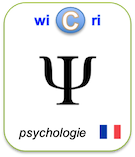Trance and Shamanic Cure on the South American Continent: Psychopharmacological and Neurobiological Interpretations
Identifieur interne : 000388 ( Istex/Corpus ); précédent : 000387; suivant : 000389Trance and Shamanic Cure on the South American Continent: Psychopharmacological and Neurobiological Interpretations
Auteurs : Francois BlancSource :
- Anthropology of Consciousness [ 1053-4202 ] ; 2010-03.
English descriptors
- KwdEn :
Abstract
This article examines the neurobiological basis of the healing power attributed to shamanic practices in the Andes and Brazil in light of the pharmacology of neurotransmitters and the new technological explorations of brain functioning. The psychotropic plants used in shamanic psychiatric cures interfere selectively with the intrinsic neuromediators of the brain. Mainly they may alter: (1) the neuroendocrine functioning through the adrenergic system by controlling stressful conditions, (2) the dopaminergic system in incentive learning and emotions incorporation, (3) the serotoninergic system in modulating behaviors, and mood, and (4) basic functions implied in anxiety or depression. PET scans and functional magnetic resonance imaging studies of hypnotic trance and altered states of consciousness may provide a useful model for the neurophysiological phenomena of shamanic drum‐and‐dance trance. The reorganization of cortical areas and the direct interconnections between the prefrontal cortex and the dopaminergic reward centers in the limbic system are of particular significance for human social judgment and symbolic processing. Those centers—including the hypothalamus and the amygdala (associated with psychosomatic equilibrium, memory, and emotion) are enhanced. This arousal may be amplified in order to induce a cathartic crisis—the shamanic trance. It is suggested that through this holistic approach the shaman empirically interferes in neurobiological dysfunctions.
Url:
DOI: 10.1111/j.1556-3537.2010.01022.x
Links to Exploration step
ISTEX:4164D437AAC8F2230E8C4536AB88B3B43188A013Le document en format XML
<record><TEI wicri:istexFullTextTei="biblStruct"><teiHeader><fileDesc><titleStmt><title xml:lang="en">Trance and Shamanic Cure on the South American Continent: Psychopharmacological and Neurobiological Interpretations</title><author><name sortKey="Blanc, Francois" sort="Blanc, Francois" uniqKey="Blanc F" first="Francois" last="Blanc">Francois Blanc</name><affiliation><mods:affiliation>University Louis Pasteur, Strasbourg, France</mods:affiliation></affiliation><affiliation><mods:affiliation>University of Miami, Miami, FL</mods:affiliation></affiliation><affiliation><mods:affiliation>University San Abad del Cusco UNSAAC, Cusco, Perufluisblanc.fischer@yahoo.frblog: http://inti.uniterre.com</mods:affiliation></affiliation></author></titleStmt><publicationStmt><idno type="wicri:source">ISTEX</idno><idno type="RBID">ISTEX:4164D437AAC8F2230E8C4536AB88B3B43188A013</idno><date when="2010" year="2010">2010</date><idno type="doi">10.1111/j.1556-3537.2010.01022.x</idno><idno type="url">https://api.istex.fr/document/4164D437AAC8F2230E8C4536AB88B3B43188A013/fulltext/pdf</idno><idno type="wicri:Area/Istex/Corpus">000388</idno><idno type="wicri:explorRef" wicri:stream="Istex" wicri:step="Corpus" wicri:corpus="ISTEX">000388</idno></publicationStmt><sourceDesc><biblStruct><analytic><title level="a" type="main" xml:lang="en">Trance and Shamanic Cure on the South American Continent: Psychopharmacological and Neurobiological Interpretations</title><author><name sortKey="Blanc, Francois" sort="Blanc, Francois" uniqKey="Blanc F" first="Francois" last="Blanc">Francois Blanc</name><affiliation><mods:affiliation>University Louis Pasteur, Strasbourg, France</mods:affiliation></affiliation><affiliation><mods:affiliation>University of Miami, Miami, FL</mods:affiliation></affiliation><affiliation><mods:affiliation>University San Abad del Cusco UNSAAC, Cusco, Perufluisblanc.fischer@yahoo.frblog: http://inti.uniterre.com</mods:affiliation></affiliation></author></analytic><monogr></monogr><series><title level="j">Anthropology of Consciousness</title><idno type="ISSN">1053-4202</idno><idno type="eISSN">1556-3537</idno><imprint><publisher>Blackwell Publishing Inc</publisher><pubPlace>Malden, USA</pubPlace><date type="published" when="2010-03">2010-03</date><biblScope unit="volume">21</biblScope><biblScope unit="issue">1</biblScope><biblScope unit="page" from="83">83</biblScope><biblScope unit="page" to="105">105</biblScope></imprint><idno type="ISSN">1053-4202</idno></series><idno type="istex">4164D437AAC8F2230E8C4536AB88B3B43188A013</idno><idno type="DOI">10.1111/j.1556-3537.2010.01022.x</idno><idno type="ArticleID">ANOC1022</idno></biblStruct></sourceDesc><seriesStmt><idno type="ISSN">1053-4202</idno></seriesStmt></fileDesc><profileDesc><textClass><keywords scheme="KwdEn" xml:lang="en"><term>hypnosis</term><term>neuroimagery</term><term>neuropharmacology</term><term>shamanic trance</term></keywords></textClass><langUsage><language ident="en">en</language></langUsage></profileDesc></teiHeader><front><div type="abstract" xml:lang="en">This article examines the neurobiological basis of the healing power attributed to shamanic practices in the Andes and Brazil in light of the pharmacology of neurotransmitters and the new technological explorations of brain functioning. The psychotropic plants used in shamanic psychiatric cures interfere selectively with the intrinsic neuromediators of the brain. Mainly they may alter: (1) the neuroendocrine functioning through the adrenergic system by controlling stressful conditions, (2) the dopaminergic system in incentive learning and emotions incorporation, (3) the serotoninergic system in modulating behaviors, and mood, and (4) basic functions implied in anxiety or depression. PET scans and functional magnetic resonance imaging studies of hypnotic trance and altered states of consciousness may provide a useful model for the neurophysiological phenomena of shamanic drum‐and‐dance trance. The reorganization of cortical areas and the direct interconnections between the prefrontal cortex and the dopaminergic reward centers in the limbic system are of particular significance for human social judgment and symbolic processing. Those centers—including the hypothalamus and the amygdala (associated with psychosomatic equilibrium, memory, and emotion) are enhanced. This arousal may be amplified in order to induce a cathartic crisis—the shamanic trance. It is suggested that through this holistic approach the shaman empirically interferes in neurobiological dysfunctions.</div></front></TEI><istex><corpusName>wiley</corpusName><author><json:item><name>FRANCOIS BLANC</name><affiliations><json:string>University Louis Pasteur, Strasbourg, France</json:string><json:string>University of Miami, Miami, FL</json:string><json:string>University San Abad del Cusco UNSAAC, Cusco, Perufluisblanc.fischer@yahoo.frblog: http://inti.uniterre.com</json:string></affiliations></json:item></author><subject><json:item><lang><json:string>eng</json:string></lang><value>shamanic trance</value></json:item><json:item><lang><json:string>eng</json:string></lang><value>neuropharmacology</value></json:item><json:item><lang><json:string>eng</json:string></lang><value>neuroimagery</value></json:item><json:item><lang><json:string>eng</json:string></lang><value>hypnosis</value></json:item></subject><articleId><json:string>ANOC1022</json:string></articleId><language><json:string>eng</json:string></language><originalGenre><json:string>article</json:string></originalGenre><abstract>This article examines the neurobiological basis of the healing power attributed to shamanic practices in the Andes and Brazil in light of the pharmacology of neurotransmitters and the new technological explorations of brain functioning. The psychotropic plants used in shamanic psychiatric cures interfere selectively with the intrinsic neuromediators of the brain. Mainly they may alter: (1) the neuroendocrine functioning through the adrenergic system by controlling stressful conditions, (2) the dopaminergic system in incentive learning and emotions incorporation, (3) the serotoninergic system in modulating behaviors, and mood, and (4) basic functions implied in anxiety or depression. PET scans and functional magnetic resonance imaging studies of hypnotic trance and altered states of consciousness may provide a useful model for the neurophysiological phenomena of shamanic drum‐and‐dance trance. The reorganization of cortical areas and the direct interconnections between the prefrontal cortex and the dopaminergic reward centers in the limbic system are of particular significance for human social judgment and symbolic processing. Those centers—including the hypothalamus and the amygdala (associated with psychosomatic equilibrium, memory, and emotion) are enhanced. This arousal may be amplified in order to induce a cathartic crisis—the shamanic trance. It is suggested that through this holistic approach the shaman empirically interferes in neurobiological dysfunctions.</abstract><qualityIndicators><score>7.424</score><pdfVersion>1.3</pdfVersion><pdfPageSize>485.972 x 720 pts</pdfPageSize><refBibsNative>true</refBibsNative><abstractCharCount>1488</abstractCharCount><pdfWordCount>7368</pdfWordCount><pdfCharCount>47239</pdfCharCount><pdfPageCount>23</pdfPageCount><abstractWordCount>202</abstractWordCount></qualityIndicators><title>Trance and Shamanic Cure on the South American Continent: Psychopharmacological and Neurobiological Interpretations</title><genre><json:string>article</json:string></genre><host><volume>21</volume><publisherId><json:string>ANOC</json:string></publisherId><pages><total>23</total><last>105</last><first>83</first></pages><issn><json:string>1053-4202</json:string></issn><issue>1</issue><genre><json:string>journal</json:string></genre><language><json:string>unknown</json:string></language><eissn><json:string>1556-3537</json:string></eissn><title>Anthropology of Consciousness</title><doi><json:string>10.1111/(ISSN)1556-3537</json:string></doi></host><publicationDate>2010</publicationDate><copyrightDate>2010</copyrightDate><doi><json:string>10.1111/j.1556-3537.2010.01022.x</json:string></doi><id>4164D437AAC8F2230E8C4536AB88B3B43188A013</id><score>0.17043638</score><fulltext><json:item><extension>pdf</extension><original>true</original><mimetype>application/pdf</mimetype><uri>https://api.istex.fr/document/4164D437AAC8F2230E8C4536AB88B3B43188A013/fulltext/pdf</uri></json:item><json:item><extension>zip</extension><original>false</original><mimetype>application/zip</mimetype><uri>https://api.istex.fr/document/4164D437AAC8F2230E8C4536AB88B3B43188A013/fulltext/zip</uri></json:item><istex:fulltextTEI uri="https://api.istex.fr/document/4164D437AAC8F2230E8C4536AB88B3B43188A013/fulltext/tei"><teiHeader><fileDesc><titleStmt><title level="a" type="main" xml:lang="en">Trance and Shamanic Cure on the South American Continent: Psychopharmacological and Neurobiological Interpretations</title></titleStmt><publicationStmt><authority>ISTEX</authority><publisher>Blackwell Publishing Inc</publisher><pubPlace>Malden, USA</pubPlace><availability><p>© 2010 by the American Anthropological Association</p></availability><date>2010</date></publicationStmt><sourceDesc><biblStruct type="inbook"><analytic><title level="a" type="main" xml:lang="en">Trance and Shamanic Cure on the South American Continent: Psychopharmacological and Neurobiological Interpretations</title><author xml:id="author-1"><persName><forename type="first">FRANCOIS</forename><surname>BLANC</surname></persName><affiliation>University Louis Pasteur, Strasbourg, France</affiliation><affiliation>University of Miami, Miami, FL</affiliation><affiliation>University San Abad del Cusco UNSAAC, Cusco, Perufluisblanc.fischer@yahoo.frblog: http://inti.uniterre.com</affiliation></author></analytic><monogr><title level="j">Anthropology of Consciousness</title><idno type="pISSN">1053-4202</idno><idno type="eISSN">1556-3537</idno><idno type="DOI">10.1111/(ISSN)1556-3537</idno><imprint><publisher>Blackwell Publishing Inc</publisher><pubPlace>Malden, USA</pubPlace><date type="published" when="2010-03"></date><biblScope unit="volume">21</biblScope><biblScope unit="issue">1</biblScope><biblScope unit="page" from="83">83</biblScope><biblScope unit="page" to="105">105</biblScope></imprint></monogr><idno type="istex">4164D437AAC8F2230E8C4536AB88B3B43188A013</idno><idno type="DOI">10.1111/j.1556-3537.2010.01022.x</idno><idno type="ArticleID">ANOC1022</idno></biblStruct></sourceDesc></fileDesc><profileDesc><creation><date>2010</date></creation><langUsage><language ident="en">en</language></langUsage><abstract xml:lang="en"><p>This article examines the neurobiological basis of the healing power attributed to shamanic practices in the Andes and Brazil in light of the pharmacology of neurotransmitters and the new technological explorations of brain functioning. The psychotropic plants used in shamanic psychiatric cures interfere selectively with the intrinsic neuromediators of the brain. Mainly they may alter: (1) the neuroendocrine functioning through the adrenergic system by controlling stressful conditions, (2) the dopaminergic system in incentive learning and emotions incorporation, (3) the serotoninergic system in modulating behaviors, and mood, and (4) basic functions implied in anxiety or depression. PET scans and functional magnetic resonance imaging studies of hypnotic trance and altered states of consciousness may provide a useful model for the neurophysiological phenomena of shamanic drum‐and‐dance trance. The reorganization of cortical areas and the direct interconnections between the prefrontal cortex and the dopaminergic reward centers in the limbic system are of particular significance for human social judgment and symbolic processing. Those centers—including the hypothalamus and the amygdala (associated with psychosomatic equilibrium, memory, and emotion) are enhanced. This arousal may be amplified in order to induce a cathartic crisis—the shamanic trance. It is suggested that through this holistic approach the shaman empirically interferes in neurobiological dysfunctions.</p></abstract><textClass xml:lang="en"><keywords scheme="keyword"><list><head>keywords</head><item><term>shamanic trance</term></item><item><term>neuropharmacology</term></item><item><term>neuroimagery</term></item><item><term>hypnosis</term></item></list></keywords></textClass></profileDesc><revisionDesc><change when="2010-03">Published</change></revisionDesc></teiHeader></istex:fulltextTEI><json:item><extension>txt</extension><original>false</original><mimetype>text/plain</mimetype><uri>https://api.istex.fr/document/4164D437AAC8F2230E8C4536AB88B3B43188A013/fulltext/txt</uri></json:item></fulltext><metadata><istex:metadataXml wicri:clean="Wiley, elements deleted: body"><istex:xmlDeclaration>version="1.0" encoding="UTF-8" standalone="yes"</istex:xmlDeclaration><istex:document><component version="2.0" type="serialArticle" xml:lang="en"><header><publicationMeta level="product"><publisherInfo><publisherName>Blackwell Publishing Inc</publisherName><publisherLoc>Malden, USA</publisherLoc></publisherInfo><doi origin="wiley" registered="yes">10.1111/(ISSN)1556-3537</doi><issn type="print">1053-4202</issn><issn type="electronic">1556-3537</issn><idGroup><id type="product" value="ANOC"></id><id type="publisherDivision" value="ST"></id></idGroup><titleGroup><title type="main" sort="ANTHROPOLOGY CONSCIOUSNESS">Anthropology of Consciousness</title></titleGroup></publicationMeta><publicationMeta level="part" position="03001"><doi origin="wiley">10.1111/anoc.2010.21.issue-1</doi><numberingGroup><numbering type="journalVolume" number="21">21</numbering><numbering type="journalIssue" number="1">1</numbering></numberingGroup><coverDate startDate="2010-03">Spring 2010</coverDate></publicationMeta><publicationMeta level="unit" type="article" position="5" status="forIssue"><doi origin="wiley">10.1111/j.1556-3537.2010.01022.x</doi><idGroup><id type="unit" value="ANOC1022"></id><id type="supplier" value="1022"></id></idGroup><countGroup><count type="pageTotal" number="23"></count></countGroup><titleGroup><title type="tocHeading1">PAPERS</title></titleGroup><copyright>© 2010 by the American Anthropological Association</copyright><eventGroup><event type="firstOnline" date="2010-03-04"></event><event type="publishedOnlineFinalForm" date="2010-03-04"></event><event type="xmlConverted" agent="Converter:BPG_TO_WML3G version:2.3.2 mode:FullText source:FullText result:FullText" date="2010-03-12"></event><event type="xmlConverted" agent="Converter:WILEY_ML3G_TO_WILEY_ML3GV2 version:3.8.8" date="2014-01-04"></event><event type="xmlConverted" agent="Converter:WML3G_To_WML3G version:4.1.7 mode:FullText,remove_FC" date="2014-10-14"></event></eventGroup><numberingGroup><numbering type="pageFirst" number="83">83</numbering><numbering type="pageLast" number="105">105</numbering></numberingGroup><linkGroup><link type="toTypesetVersion" href="file:ANOC.ANOC1022.pdf"></link></linkGroup></publicationMeta><contentMeta><countGroup><count type="figureTotal" number="3"></count><count type="tableTotal" number="0"></count><count type="formulaTotal" number="0"></count><count type="referenceTotal" number="66"></count><count type="wordTotal" number="8685"></count><count type="linksCrossRef" number="74"></count></countGroup><titleGroup><title type="main">Trance and Shamanic Cure on the South American Continent: Psychopharmacological and Neurobiological Interpretations</title><title type="short">TRANCE AND SHAMANIC CURE</title></titleGroup><creators><creator creatorRole="author" xml:id="cr1" affiliationRef="#a1 #a2 #a3"><personName><givenNames>FRANCOIS</givenNames><familyName>BLANC</familyName></personName></creator></creators><affiliationGroup><affiliation xml:id="a1" countryCode="FR"><unparsedAffiliation>University Louis Pasteur, Strasbourg, France</unparsedAffiliation></affiliation><affiliation xml:id="a2"><unparsedAffiliation>University of Miami, Miami, FL</unparsedAffiliation></affiliation><affiliation xml:id="a3" countryCode="PE"><unparsedAffiliation> University San Abad del Cusco UNSAAC, Cusco, Peru
<email normalForm="fluisblanc.fischer@yahoo.fr">fluisblanc.fischer@yahoo.fr</email>
blog: <url href="http://inti.uniterre.com">http://inti.uniterre.com</url></unparsedAffiliation></affiliation></affiliationGroup><keywordGroup xml:lang="en"><keyword xml:id="k1">shamanic trance</keyword><keyword xml:id="k2">neuropharmacology</keyword><keyword xml:id="k3">neuroimagery</keyword><keyword xml:id="k4">hypnosis</keyword></keywordGroup><abstractGroup><abstract type="main" xml:lang="en"><title type="main">ABSTRACT</title><p>This article examines the neurobiological basis of the healing power attributed to shamanic practices in the Andes and Brazil in light of the pharmacology of neurotransmitters and the new technological explorations of brain functioning. The psychotropic plants used in shamanic psychiatric cures interfere selectively with the intrinsic neuromediators of the brain. Mainly they may alter: (1) the neuroendocrine functioning through the adrenergic system by controlling stressful conditions, (2) the dopaminergic system in incentive learning and emotions incorporation, (3) the serotoninergic system in modulating behaviors, and mood, and (4) basic functions implied in anxiety or depression. PET scans and functional magnetic resonance imaging studies of hypnotic trance and altered states of consciousness may provide a useful model for the neurophysiological phenomena of shamanic drum‐and‐dance trance. The reorganization of cortical areas and the direct interconnections between the prefrontal cortex and the dopaminergic reward centers in the limbic system are of particular significance for human social judgment and symbolic processing. Those centers—including the hypothalamus and the amygdala (associated with psychosomatic equilibrium, memory, and emotion) are enhanced. This arousal may be amplified in order to induce a cathartic crisis—the shamanic trance. It is suggested that through this holistic approach the shaman empirically interferes in neurobiological dysfunctions.</p></abstract></abstractGroup></contentMeta></header></component></istex:document></istex:metadataXml><mods version="3.6"><titleInfo lang="en"><title>Trance and Shamanic Cure on the South American Continent: Psychopharmacological and Neurobiological Interpretations</title></titleInfo><titleInfo type="abbreviated" lang="en"><title>TRANCE AND SHAMANIC CURE</title></titleInfo><titleInfo type="alternative" contentType="CDATA" lang="en"><title>Trance and Shamanic Cure on the South American Continent: Psychopharmacological and Neurobiological Interpretations</title></titleInfo><name type="personal"><namePart type="given">FRANCOIS</namePart><namePart type="family">BLANC</namePart><affiliation>University Louis Pasteur, Strasbourg, France</affiliation><affiliation>University of Miami, Miami, FL</affiliation><affiliation>University San Abad del Cusco UNSAAC, Cusco, Perufluisblanc.fischer@yahoo.frblog: http://inti.uniterre.com</affiliation><role><roleTerm type="text">author</roleTerm></role></name><typeOfResource>text</typeOfResource><genre type="article" displayLabel="article"></genre><originInfo><publisher>Blackwell Publishing Inc</publisher><place><placeTerm type="text">Malden, USA</placeTerm></place><dateIssued encoding="w3cdtf">2010-03</dateIssued><copyrightDate encoding="w3cdtf">2010</copyrightDate></originInfo><language><languageTerm type="code" authority="rfc3066">en</languageTerm><languageTerm type="code" authority="iso639-2b">eng</languageTerm></language><physicalDescription><internetMediaType>text/html</internetMediaType><extent unit="figures">3</extent><extent unit="references">66</extent><extent unit="words">8685</extent></physicalDescription><abstract lang="en">This article examines the neurobiological basis of the healing power attributed to shamanic practices in the Andes and Brazil in light of the pharmacology of neurotransmitters and the new technological explorations of brain functioning. The psychotropic plants used in shamanic psychiatric cures interfere selectively with the intrinsic neuromediators of the brain. Mainly they may alter: (1) the neuroendocrine functioning through the adrenergic system by controlling stressful conditions, (2) the dopaminergic system in incentive learning and emotions incorporation, (3) the serotoninergic system in modulating behaviors, and mood, and (4) basic functions implied in anxiety or depression. PET scans and functional magnetic resonance imaging studies of hypnotic trance and altered states of consciousness may provide a useful model for the neurophysiological phenomena of shamanic drum‐and‐dance trance. The reorganization of cortical areas and the direct interconnections between the prefrontal cortex and the dopaminergic reward centers in the limbic system are of particular significance for human social judgment and symbolic processing. Those centers—including the hypothalamus and the amygdala (associated with psychosomatic equilibrium, memory, and emotion) are enhanced. This arousal may be amplified in order to induce a cathartic crisis—the shamanic trance. It is suggested that through this holistic approach the shaman empirically interferes in neurobiological dysfunctions.</abstract><subject lang="en"><genre>keywords</genre><topic>shamanic trance</topic><topic>neuropharmacology</topic><topic>neuroimagery</topic><topic>hypnosis</topic></subject><relatedItem type="host"><titleInfo><title>Anthropology of Consciousness</title></titleInfo><genre type="journal">journal</genre><identifier type="ISSN">1053-4202</identifier><identifier type="eISSN">1556-3537</identifier><identifier type="DOI">10.1111/(ISSN)1556-3537</identifier><identifier type="PublisherID">ANOC</identifier><part><date>2010</date><detail type="volume"><caption>vol.</caption><number>21</number></detail><detail type="issue"><caption>no.</caption><number>1</number></detail><extent unit="pages"><start>83</start><end>105</end><total>23</total></extent></part></relatedItem><identifier type="istex">4164D437AAC8F2230E8C4536AB88B3B43188A013</identifier><identifier type="DOI">10.1111/j.1556-3537.2010.01022.x</identifier><identifier type="ArticleID">ANOC1022</identifier><accessCondition type="use and reproduction" contentType="copyright">© 2010 by the American Anthropological Association</accessCondition><recordInfo><recordContentSource>WILEY</recordContentSource><recordOrigin>Blackwell Publishing Inc</recordOrigin></recordInfo></mods></metadata><serie></serie></istex></record>Pour manipuler ce document sous Unix (Dilib)
EXPLOR_STEP=$WICRI_ROOT/Wicri/Psychologie/explor/DanceTherParkinsonV1/Data/Istex/Corpus
HfdSelect -h $EXPLOR_STEP/biblio.hfd -nk 000388 | SxmlIndent | more
Ou
HfdSelect -h $EXPLOR_AREA/Data/Istex/Corpus/biblio.hfd -nk 000388 | SxmlIndent | more
Pour mettre un lien sur cette page dans le réseau Wicri
{{Explor lien
|wiki= Wicri/Psychologie
|area= DanceTherParkinsonV1
|flux= Istex
|étape= Corpus
|type= RBID
|clé= ISTEX:4164D437AAC8F2230E8C4536AB88B3B43188A013
|texte= Trance and Shamanic Cure on the South American Continent: Psychopharmacological and Neurobiological Interpretations
}}
|
| This area was generated with Dilib version V0.6.35. | |


